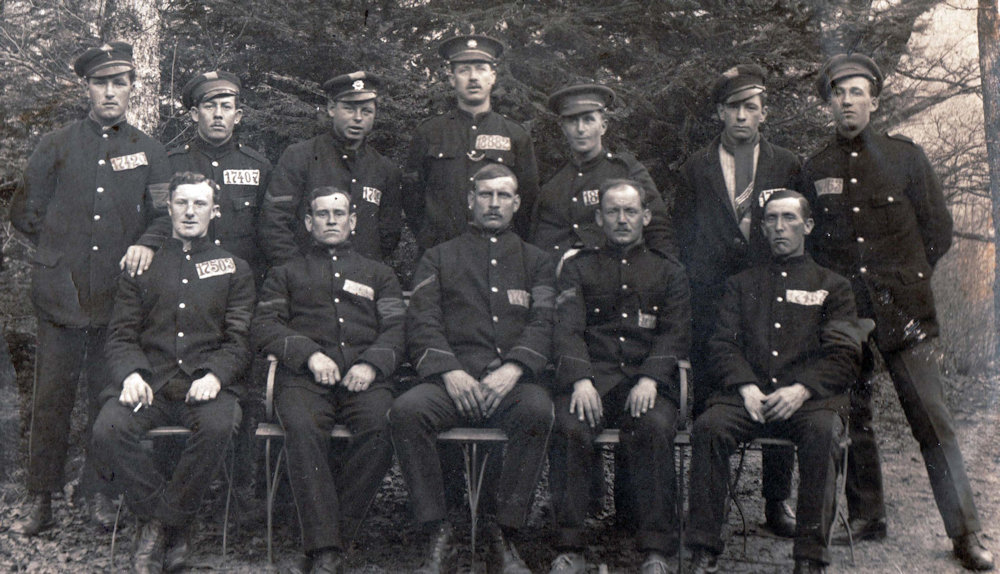
113291 Pte. Thomas Henry Hiller was born on March 14th, 1898, in Walmer, Kent, England, the son of Thomas Joseph Hiller and Ada Terry.
From his early years, Thomas was exposed to military life - his father was a member of the Royal Marines Light Infantry and the family lived close to the Marine Barracks. He had no less than five uncles who were also in the military, a cousin in the Royal Horse Artillery, and he was the grandson of a 21-year veteran of the 44th Regiment of Foot who had seen service all over the world.
Tom attended a military school in England until he was eight years old, when the family moved to Strathroy, Ontario, Canada. By 1913 Tom was serving as a bugler in the 26th Regiment, Middlesex Light Infantry. The roll gave his age as 18; he was actually 15.
On October 24th, 1914, three weeks after Canada promised to send Britain 25,000 soldiers, Tom enlisted in London, Ontario. By December he was back home, his true age of 16 having been discovered. Before another year passed, he ran away to Toronto and signed up again, in August, 1915.
After training with the 8th Canadian Mounted Rifles, he was shipped to England for more training then on to France. When the 8th CMR was absorbed into the 4th CMR in January, 1916, Tom became a member of the 4th CMR, along with some 300 of his fellows, on January 29th, 1916.
By February 1916, Tom was in the trenches in Ypres, Belgium, where, on June 2nd, 1916, he was taken prisoner by the Germans during the Battle of Mount Sorrel. He spent a couple months in Dulmen POW camp, then was transferred to Heuberg, Baden, where he worked on roads and in a stone quarry for the next 2 years. The accompanying POW picture, right, shows him back row, 1st right.

Food and clothing packages were received from home and from the Red Cross which kept him alive, but work assignments were hard and the hours long. Tom, however, insisted that the Russians had it so much worse because they received no outside assistance.
Tom told of a couple ways the soldiers played jokes on the Germans - one time the prisoners were ordered to paint the compound flag pole and they did, but they attached a Union Jack (cut from a pack of cigarettes) at the very top of the pole so the British flag would always be higher than the German standard.
He also said the POWs with a laborer background would make up exotic occupations such as coronation ticket seller and lion tamer, hiding their true occupations so they wouldn't be sent to the coal mines, a reputedly tough assignment. Tom also told me he had attempted to escape several times, but always got caught.
In December 1918 Tom was liberated and repatriated to Camp Dover. Although he had no serious wounds or illnesses, he had changed dramatically, growing four inches and losing 60 pounds. Now 5' 8" (1.73m) he weighed a mere 90 pounds (41kg).
Tom emmigrated to the United States in 1921, becoming a citizen in 1941. He was highly active in the Canadian Corps, a veteran's organization, founding and leading an American branch in Niagara Falls, New York.
In 1964, the 50th anniversary of the start of World War I, Tom made a pilgrimage to Ypres and Mount Sorrel, once again standing in the trenches where "rats as big as cats" had lived alongside the soldiers. Married twice, Tom never had children, but adored (and was adored by) his nieces and nephews. He was a successful businessman and entrepreneur, remaining in Niagara Falls, New York, for the remainder of his long life, which ended two weeks after his 97th birthday.
Thanks and credit for the biography and images go to Susan McIntosh, Tom's niece.